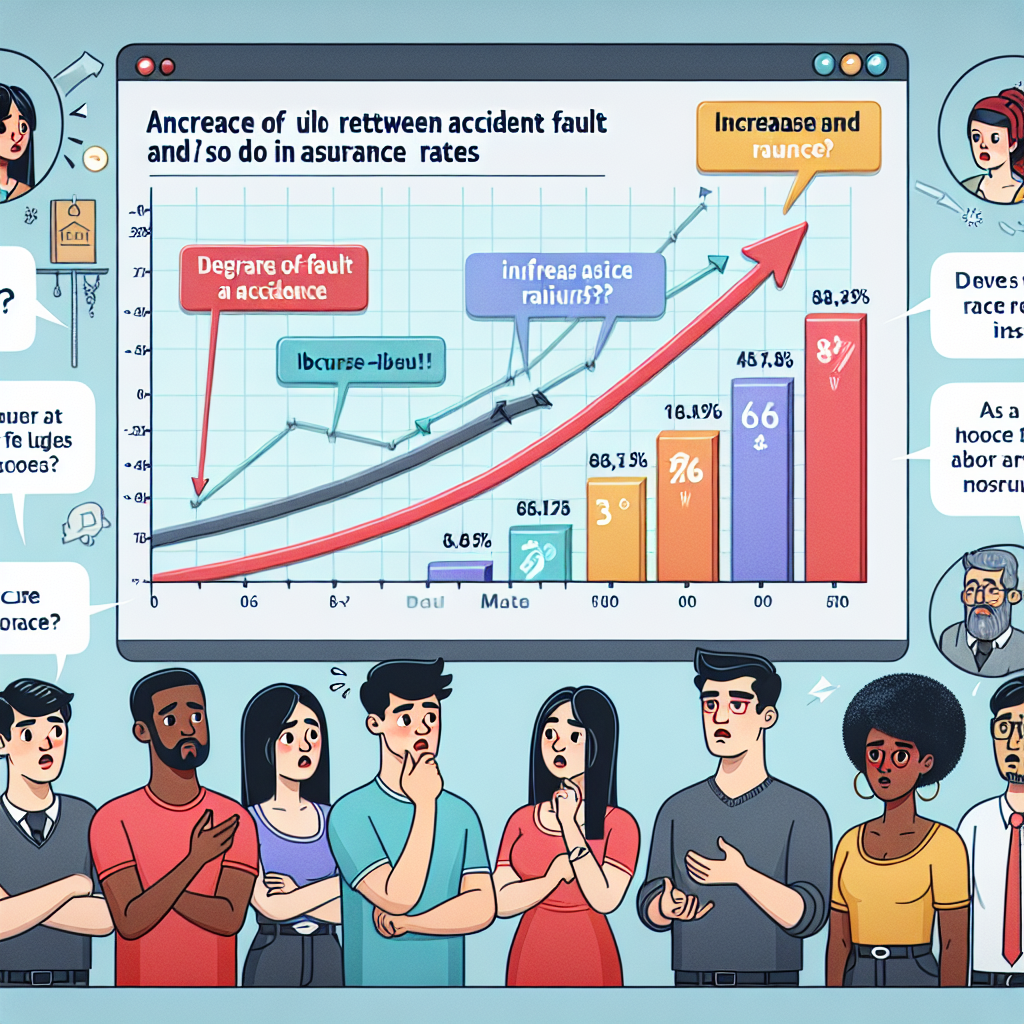===INTRO:===
When it comes to auto insurance, understanding how accident fault impacts your insurance rates is crucial. You may find yourself asking, "How do at-fault and not-at-fault accidents affect my insurance?" The answer carries significant weight, as it influences your premiums, coverage options, and even your financial stability. The emotional burden of being involved in an accident can be compounded by the fear of increased insurance costs, leaving many feeling helpless. This article will demystify the intricate relationship between accident fault and your insurance rates, providing you with the insights you need to navigate this challenging landscape.
The Role of Accident Fault in Insurance Premium Adjustments
Insurance companies assess risk to set their rates, and your driving history is a critical component of this evaluation. When determining your premium, insurers consider various factors, among which the fault of any accidents you’ve been involved in plays a pivotal role. If you are deemed at fault in an accident, this typically leads to an increase in your insurance premiums. Insurers view at-fault accidents as an indicator of risky behavior, with studies showing that drivers with at-fault claims are more likely to have future claims.
Conversely, not-at-fault accidents generally have a less detrimental effect on your insurance costs. Insurers often recognize that these incidents are not a reflection of your driving habits and may only lead to minor adjustments in your premium. However, the degree of impact can vary significantly depending on the insurance company’s policies and the state regulations governing insurance practices. Understanding these nuances can empower you to make informed choices about your coverage and risk management.
Moreover, each state has its own system of evaluating fault and how it influences insurance rates. For example, some states follow a "no-fault" model, where drivers claim from their own insurance regardless of who caused the accident. This system can help mitigate the long-term impact on premiums for not-at-fault drivers. On the other hand, in traditional tort states, the at-fault driver may be held financially responsible for damages, leading to heightened premiums for those identified as responsible for the accident. By grasping these state-specific regulations, you can better position yourself in discussions with your insurer.
Navigating the Complexities of Fault and Rate Determination
Understanding how insurers determine fault is another layer in this intricate puzzle. Insurance companies typically rely on police reports, witness statements, and various other evidence to ascertain who was at fault in an accident. However, these determinations can sometimes seem subjective, and drivers may feel unfairly penalized. If you disagree with the insurer’s assessment, it is vital to know that you have options. Gathering your own evidence, such as photographs and eyewitness accounts, can bolster your case and potentially mitigate the impact on your rates.
In addition to the immediate aftermath of an accident, the frequency of incidents also comes into play when insurance companies assess risk. A driver with multiple at-fault accidents may find themselves facing significantly higher rates than someone with a clean record. Even a single at-fault incident can result in a substantial hike in premiums, often by as much as 20-50%, depending on the insurer and the severity of the accident. This highlights the importance of proactive driving habits and safe behaviors to maintain your insurance premiums at a manageable level.
It’s also worth noting that not all accidents are treated equally. Minor incidents may have a limited impact on your insurance rates, especially if they do not result in significant damages or injuries. Insurers often employ a system of thresholds to determine if a claim will affect your premium. Knowing the specifics of these thresholds can help you strategize your insurance choices effectively, making it vital to engage in a thorough discussion with your insurer about how various incidents will specifically influence your rates.
===OUTRO:===
Understanding how accident fault impacts your insurance rates is an essential piece of the puzzle that can save you money and stress over time. By recognizing the nuances between at-fault and not-at-fault accidents and arming yourself with knowledge about how insurers determine rates, you can take control of your financial future. Engage with your insurer, ask questions, and remain informed about your state’s regulations to ensure that you are not left in the dark when it comes to your insurance premiums. The time to take action is now—evaluate your driving habits, stay informed, and choose a policy that best serves your needs.
Understanding Home Insurance Requirements Across CanadaUnderstanding Home Insurance: What Coverage Do You Need?Understanding Reasons for Car Insurance Claim DenialsRelevant LinkRelevant LinkRelevant LinkUnderstanding Canada’s Insurance Bank: A Comprehensive GuideUnderstanding Insurance Broker Salaries in Canada: A GuideUnderstanding Canada’s Insurance Coverage for Breast PumpsRelevant LinkRelevant LinkRelevant LinkUnderstanding Canada Travel Insurance for Pre-Existing ConditionsAffordable Visitor Health Insurance Options in Canada ExploredExploring Canada’s Leading Insurance Companies: A Comprehensive GuideRelevant LinkRelevant LinkRelevant Link
